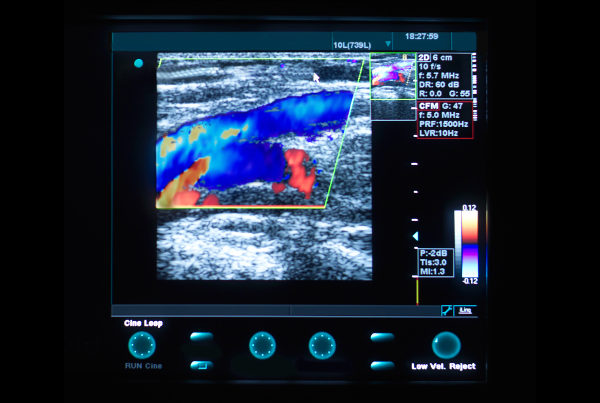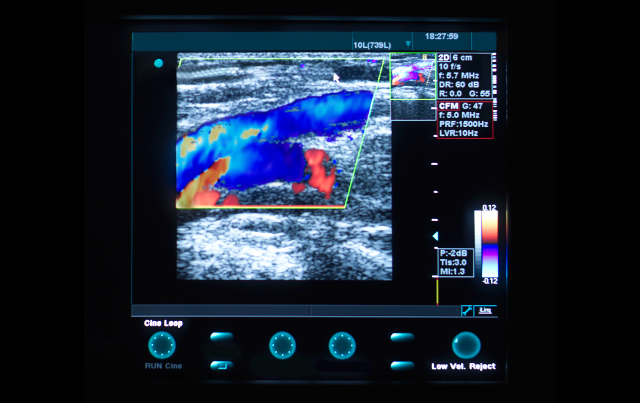Diagnosing Deep Venous Thrombosis


John Neil, MD
According to the Centers for Disease Control and Prevention, the precise number of people affected by deep vein thrombosis and pulmonary embolism is unknown, but estimates range from 300,000 to 600,000 people in the United States.
The disease course of acute deep vein thrombosis (DVT) ranges from complete resolution over time to embolization to scarring with varying degrees of obstruction, vein damage and malfunctioning venous valves.
While ultrasound is highly accurate for evaluating deep thigh veins and central arm veins in symptomatic patients, it is less accurate for calf and pelvic veins in asymptomatic patients. In these cases, Katz, et al, say, combined CT pulmonary angiography and CT venography permits comprehensive assessment and can serve as a road map for therapy.
John Neil, MD, a vascular and interventional radiologist at Scottsdale Medical Imaging (SMIL), says SMIL has the expertise and all the necessary imaging modalities to both diagnose and, in the appropriate setting, treat these conditions. “We’re sort of a one-stop shop when it comes to the diagnosis and treatment of the full spectrum of venous diseases,” Neil says. “We can diagnose and treat deep vein thrombosis, usually through ultrasound but also occasionally CT or MR venography, and our interventional radiologists in the hospital setting are qualified to treat that. Most DVTs don’t need interventional radiology treatment, but those that do can benefit greatly.”
DVT imaging challenges that may occur in the Scottsdale population include patient age and size, Neil says. Very large individuals can sometimes be difficult to assess, particularly when imaging the deep veins in the lower calf. “Ultrasound is particularly good for looking at deep veins in the legs, but not particularly good for looking at them in the pelvis, so we have to turn to other imaging modalities to make that assessment,” Neil says.
After an acute DVT, the veins in 25 to 50 percent of patients never return to normal functioning, resulting in post-thrombotic syndrome, Neil says. These patients usually develop venous insufficiency, or venous reflux that requires a more specialized ultrasound to diagnose, which SMIL can provide. Neil adds that besides DVT, patients often develop superficial vein insufficiency, and may need endovenous ablation therapy, ambulatory phlebectomy and sclerotherapy, all of which
SMIL can accomplish in the outpatient setting.
References
Katz D, Fruauff K, Kranz A, Hon M.. Imaging of deep venous thrombosis. Appl Radiol. 2014 Mar
5:6-16.


